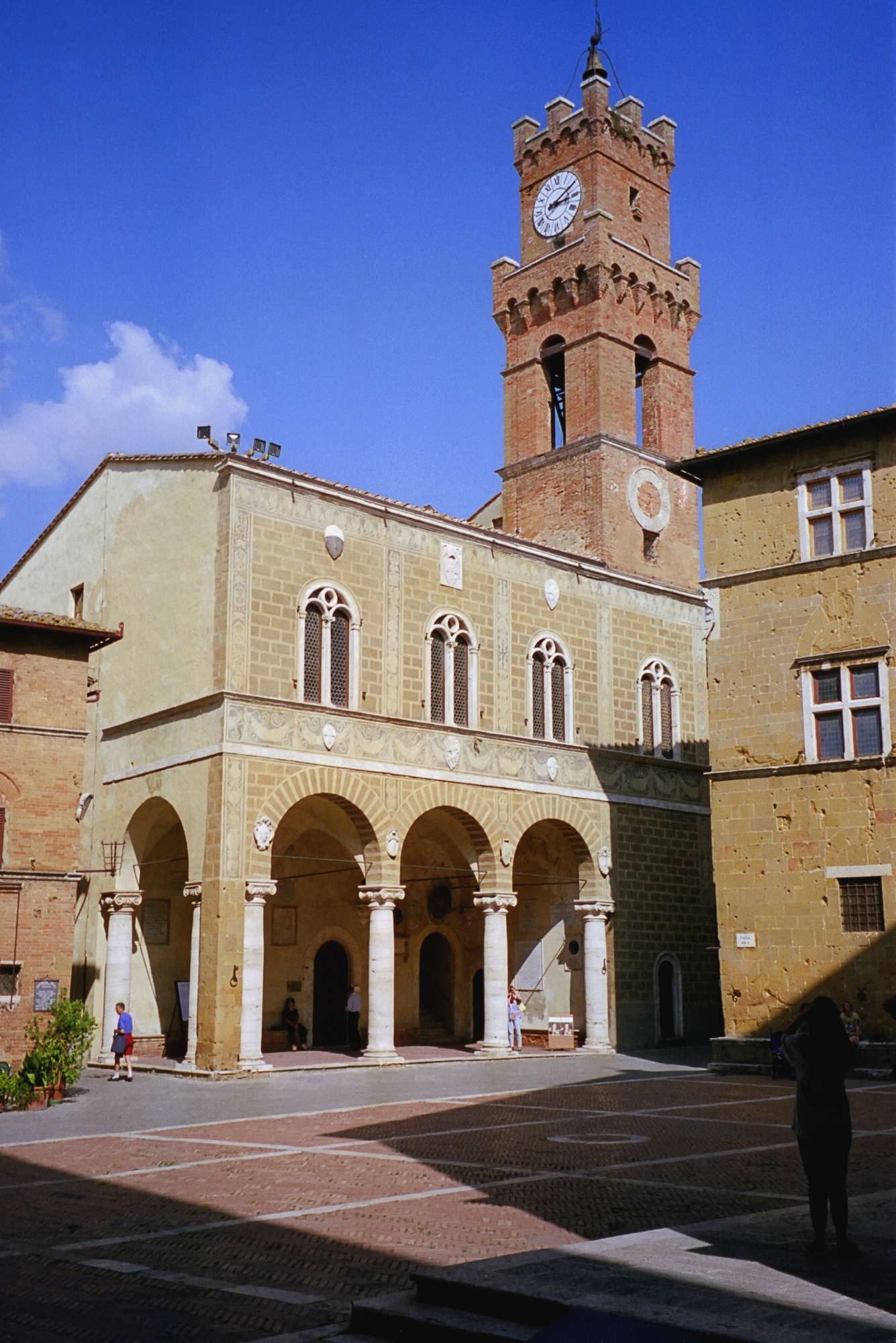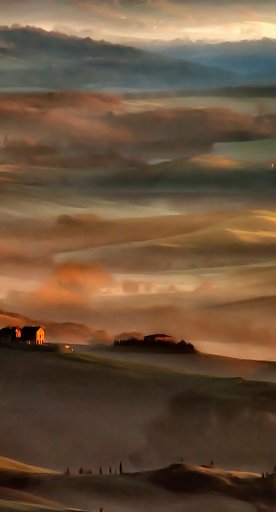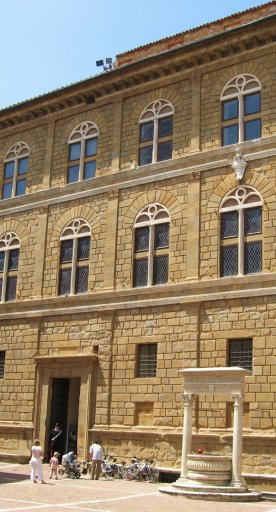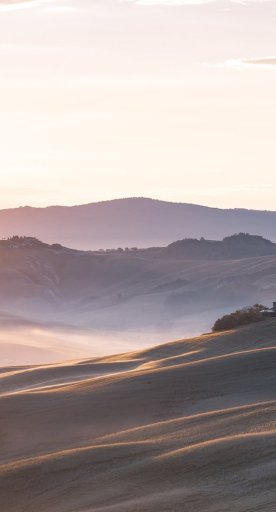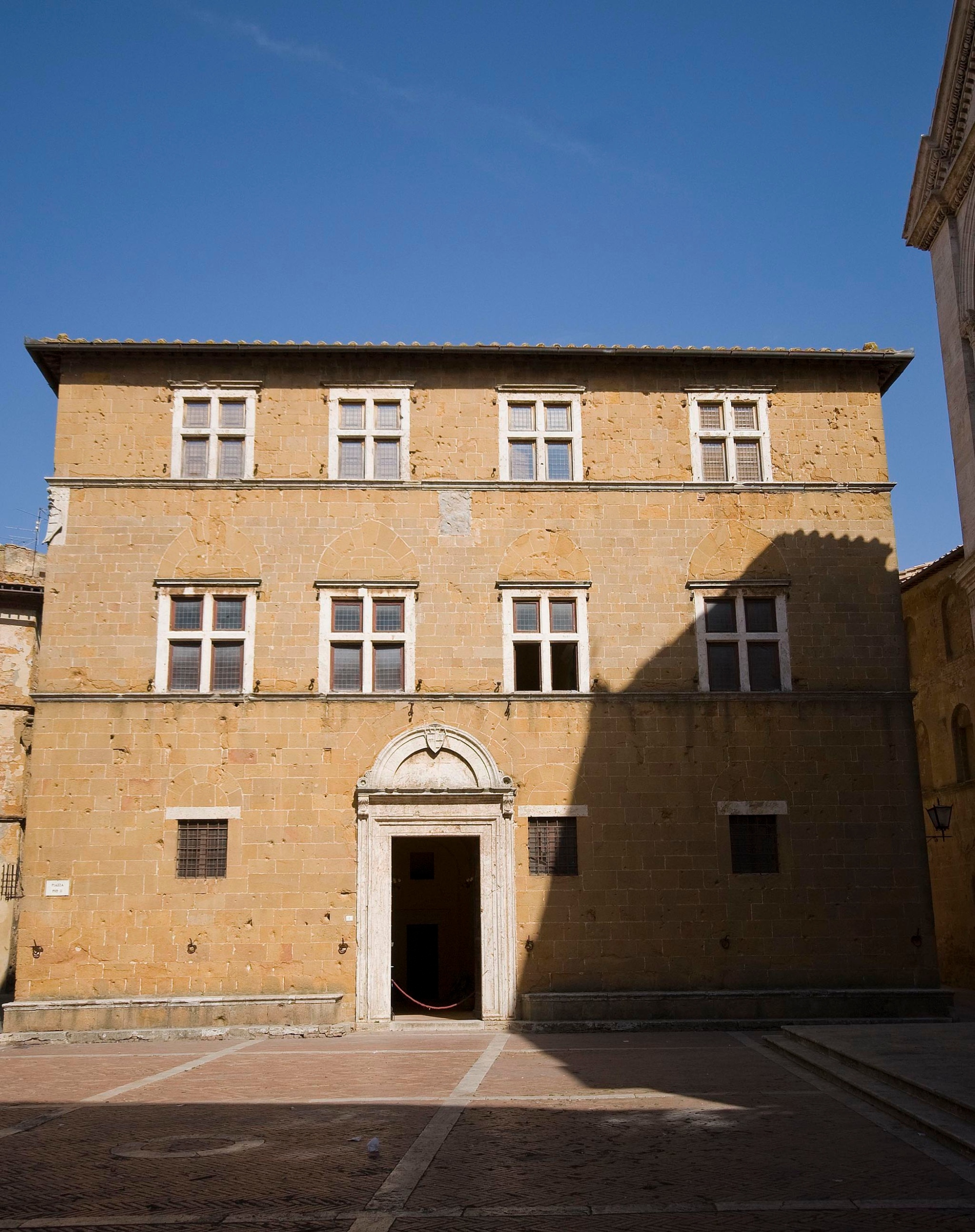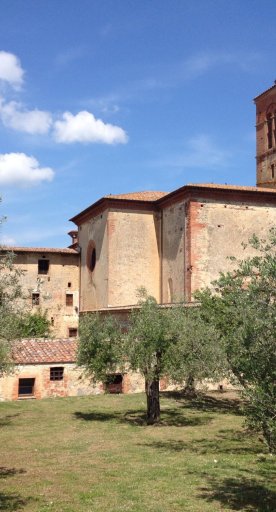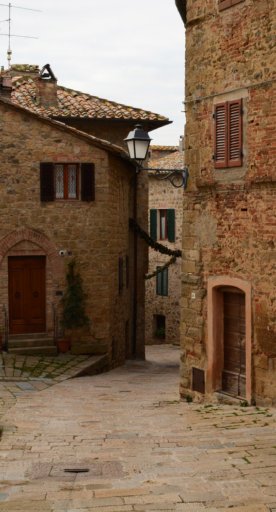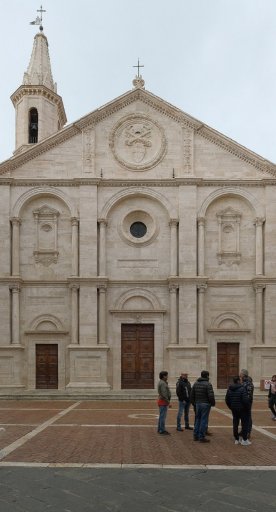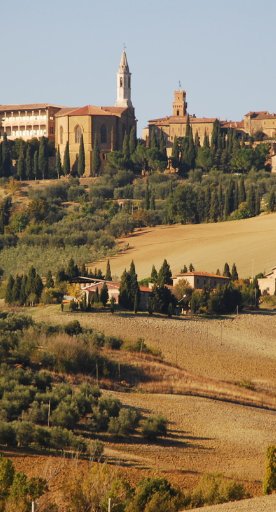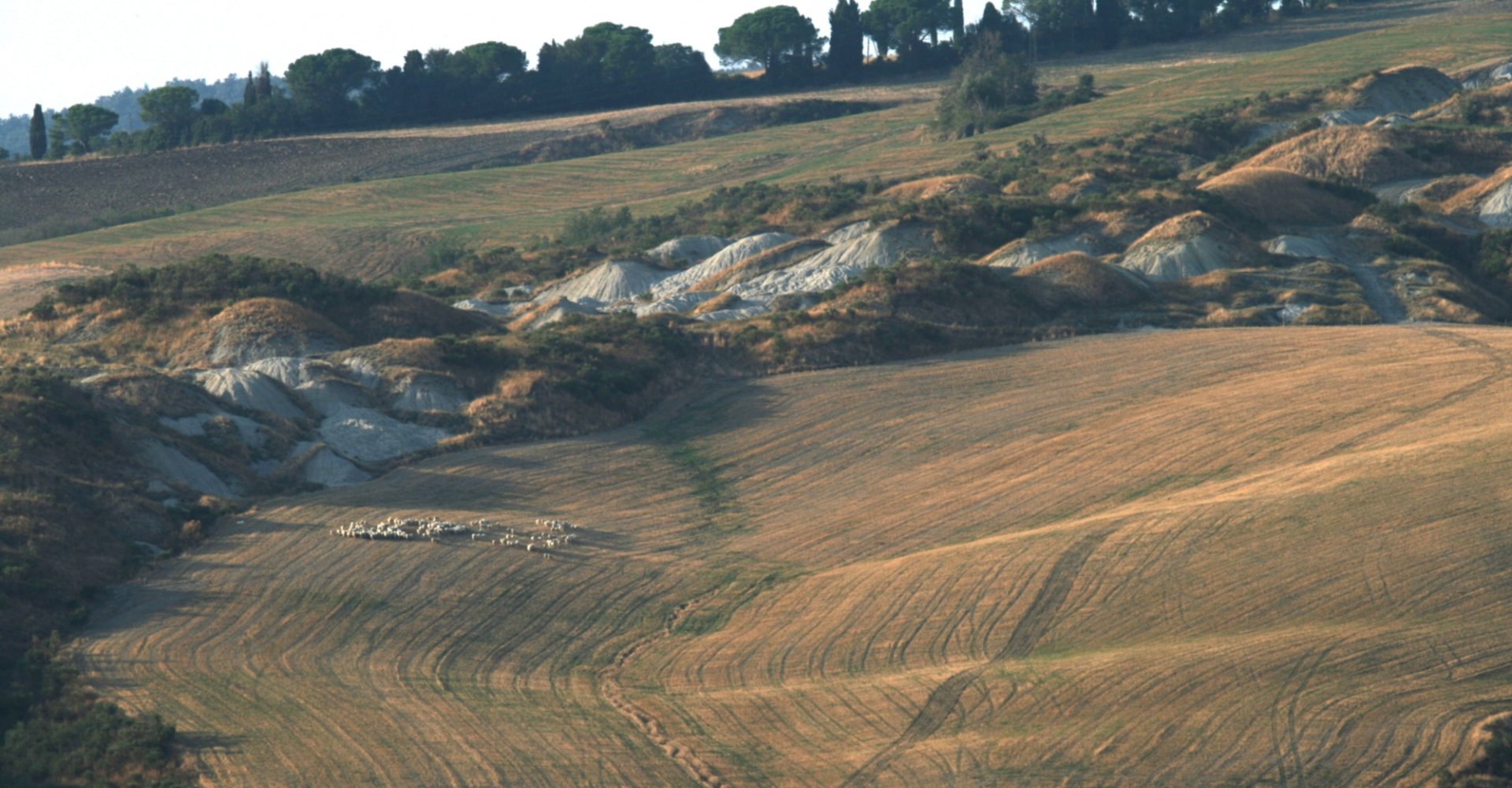
Regional Nature Reserve of Lucciolabella
A protected area within the Val d'Orcia, a World Heritage landscape, habitat for rare birds and mainly endemic vegetation
The Regional Nature Reserve of Lucciolabella is one of the protected areas that fall within the UNESCO site of the Val d’Orcia. Established in 1996, the reserve stretches for 1148 hectares southeast of Pienza, reaching as far as the municipal territories of Castiglione d'Orcia and Radicofani, and marks the eastern boundary of the larger Crete Senesi territory.
Bounded on the west by the bed of the Orcia River, the Reserve of Lucciolabella is characterized by the presence of gullies in the southern patches and especially of “biancane” (dome-shaped reliefs): these erosive forms of clay soil look like barren knolls, and owe their name to the whitish color they take on under the sun, given by mineral features in the soil.
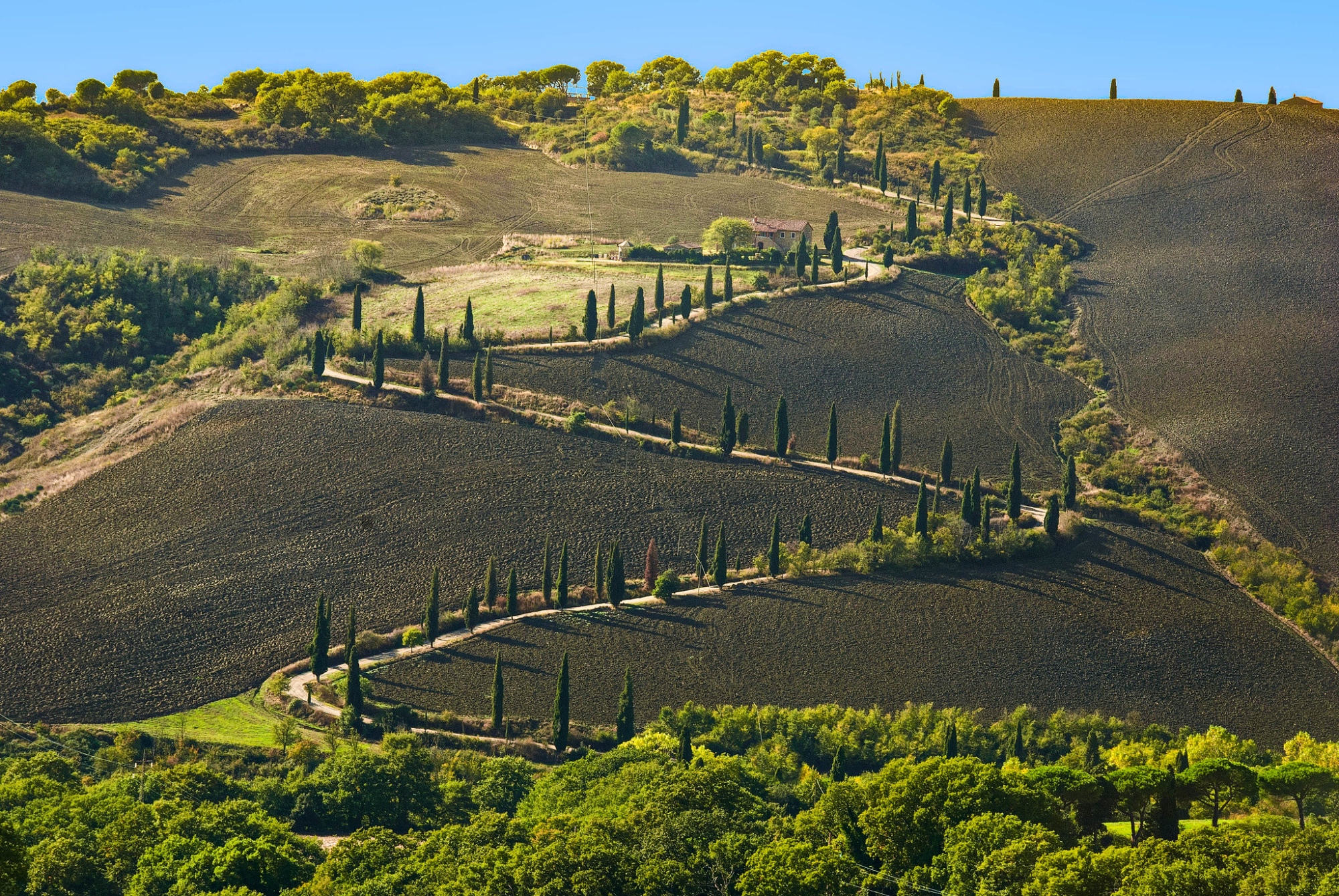
The vegetation growing within the protected area consists of resistant species that can thrive in dry, saline soils exposed to erosion phenomena. Here it is possible to find numerous bushes of Artemisia Cretacea, an endemic aromatic plant with greenish leaves also called “clay absinthe”, as well as the Scorzonella delle Argille and different species of grasses, among which the Loglierella ricurva, the Loglierella sottile and the Orzo marittimo (maritime barley). In the Orcia riverbed the Elicriso and the Santolina etrusca also grow, an endemic species typical of few areas in central Italy.
The Reserve of Lucciolabella is home to numerous species of birds, among which some rare and difficult to see such as the Lanner falcon (Falco biarmicus) and the Stone curlew (Burhinus oedicnemus): this latter, preferring the twilight and night hours, finds its natural nesting habitat on the rocky banks of the Orcia. In the whole area it is possible to glimpse the Albanella minore (Montagu’s harrier), the Biancone (short-toed eagle), and the species of Averla piccola (lessere grey shrike), cenerina (golden oriole) and capirossa (woodchat shrike). In addition to these, in the reserve it is possible to see the Ghiandaia marina (roller), and different species of lark, such as the tottavilla (woodlark), the cappellaccia (mountain lark) and the calandrella (lark).
One of the main features of the protected area is the clay soil, a legacy of a prehistoric sea that covered the area during the Pliocene, about 5 million years ago, and which still retains numerous marine fossils. It was here that the remains of a Stenella, a marine mammal that lived more than 4 million years ago, were found in 2003: this is the most complete find to date in the world.
The Reserve of Lucciolabella is traversed by a trail network that includes CAI (Club Alpino Italiano, Italian Alpine Club) trails, marked here as suitable for a hiking level.
